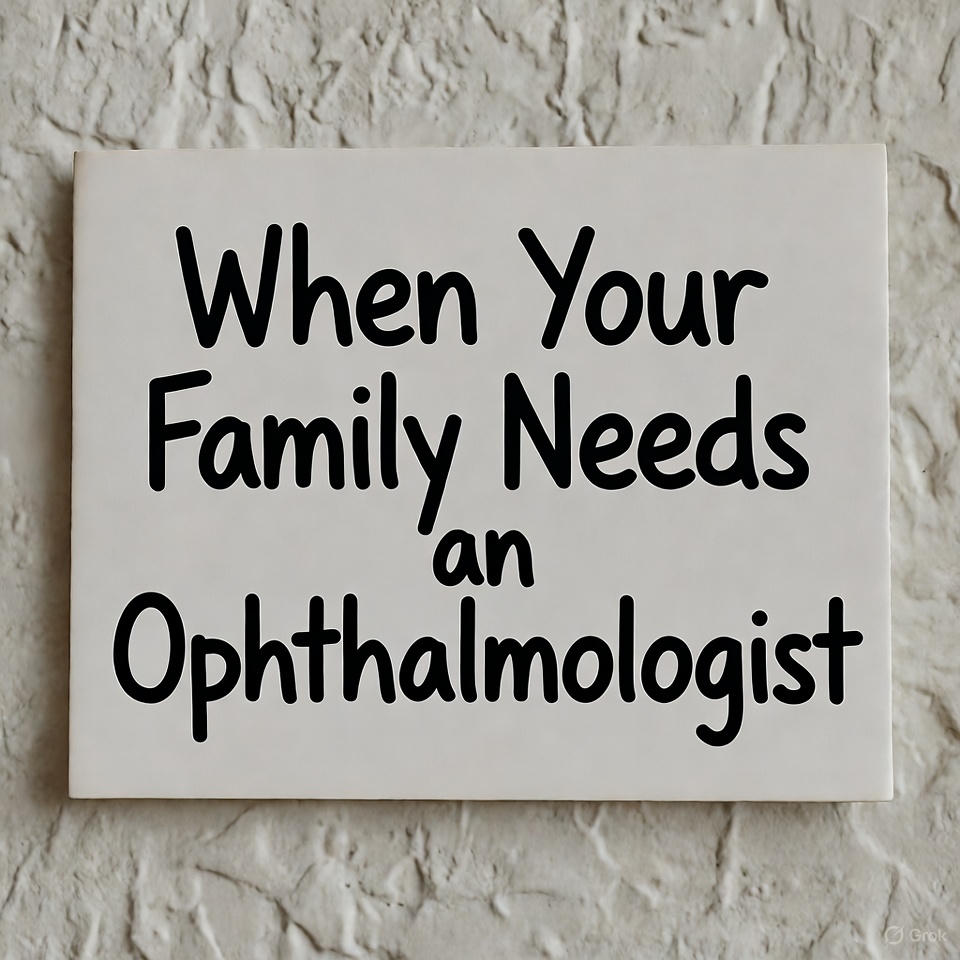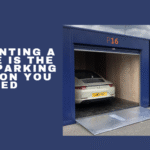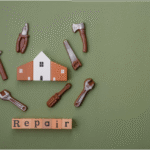Start with real life, not ideal habits
Health should be treated like every other part of family life: it has to work in the real world. That is why choosing an ophthalmologist in Nashville should begin with how your household actually uses its eyes from breakfast to bedtime. If glare turns evening carpool into a white-knuckle ride, that is a data point. If spreadsheets blur around three in the afternoon, that is another. Loden Vision Centers build care around those patterns so measurements turn into tangible upgrades. A medical chart captures numbers; your daily rhythm explains what those numbers need to do.
Spot the signals you shouldn’t shrug off
Eyes whisper before they shout, and families are busy enough to miss the whispers. Blurry night driving that creeps into more commutes, colors that look oddly muted during craft time, or a growing need for brighter task lighting can indicate lens changes that deserve a physician’s attention. Flashes with new floaters, a sudden gray curtain in the field of view, significant eye pain, or abrupt double vision require urgent evaluation. The best time to call is when something feels “off” twice in the same week. Small concerns stay small when they meet timely, expert care.
OD or MD? Pick the right door the first time
Clarity improves when you walk through the right door. Optometrists test vision, adjust prescriptions, and screen for problems. Ophthalmologists are medical doctors who diagnose and treat disease and perform procedures such as cataract surgery, LASIK, PRK, and EVO ICL. Nashville families benefit from both, but symptoms that outgrow prescriptions belong with an ophthalmologist who can connect findings to medical treatment and, when appropriate, surgery. Choosing the correct specialist saves appointments, preserves momentum, and turns worry into a plan.
What a comprehensive exam actually includes
Great eye care replaces mystery with meaning. A thorough ophthalmology visit weaves together refraction to verify what you need to see clearly, slit-lamp evaluation to examine lids, cornea, iris, and lens, and tonometry to measure intraocular pressure for glaucoma risk. Dilation opens a view of the macula and optic nerve, while visual field testing maps side vision when risk or symptoms point that way. When an exam ends with a plain-language summary that links measurements to your routine like safer night driving, fewer screen headaches, easier reading at bedtime, you leave with instructions you can remember and results you can measure.
Treatment choices that fit family rhythms
Care sticks when it respects seasons of life. Dry eye therapy makes sense when the plan centers on your job, sleep, and screen habits rather than a generic product shelf. LASIK is designed for qualified candidates who want fast comfort and distance clarity with minimal downtime. PRK offers a flap-free approach that fits certain corneas and professions. EVO ICL places a removable lens inside the eye for higher prescriptions or thinner corneas. Cataract surgery replaces a cloudy natural lens with a clear intraocular lens and can incorporate modern optics that reduce dependence on glasses. The right choice is the one that improves Tuesday afternoon and protects next year.
Money talk without the migraine
Health budgeting gets easier when you separate what insurance covers from what you elect. Medical evaluations and, when clinically necessary, cataract surgery with a standard monofocal lens are commonly covered. Advanced lenses and refractive services live in the elective column because they aim for greater independence from glasses. Ask for a clean breakdown that distinguishes medical coverage, surgical fees, and optional upgrades. The best number is the one you can explain around the dinner table without a sigh.
Meet Nicholas Hackett, MD – hometown roots and national depth
Nicholas Hackett, MD brings Nashville families a blend of local commitment and national training. He grew up in Franklin and graduated summa cum laude from Vanderbilt before completing medical school and ophthalmology residency at Northwestern, where he served as chief resident and earned recognition for refractive surgery training and top national exam performance. He authored peer-reviewed research and a cataract surgery textbook chapter, practiced at the Vanderbilt Eye Institute, and now integrates the latest advances in cataract care, glaucoma, dry eye, and vision correction at Loden Vision Centers. His leadership extends to national work on reducing healthcare waste and costs. As he puts it, “At Loden Vision Centers, ophthalmology starts with listening and ends with a plan that fits the person. When care respects real life, results feel natural.”
Age, risk, and the rhythm of checkups
Eyes change with birthdays, not just busy days. By forty, a comprehensive exam with an ophthalmologist creates a smart baseline. After sixty-five, yearly or every-other-year exams help catch glaucoma, macular degeneration, and diabetic eye disease early, when interventions work best. Diabetes, family history, contact lens dependence, and certain medications raise risk and may call for more frequent monitoring. Preventive care is not a luxury; it is the quiet habit that keeps vision available for everything else your family loves to do.
What recovery really feels like after procedures
Families plan better when timelines feel honest. After LASIK, many patients return to routine tasks within a day or two, with dryness fading as lubrication and surface healing progress. PRK needs a longer runway because the surface rebuilds, but the destination is equally clear when expectations are set. Cataract surgery typically takes minutes, with comfort returning quickly and clarity sharpening as the brain adjusts to the new lens. The most helpful advice is also the simplest: follow the drop schedule, protect the eye, hydrate, and call with questions early rather than late.
Lifestyle choices that protect hard-won clarity
Healthy eyes begin at home. Screen breaks reset focus and preserve tear stability. Sunglasses with broad UV protection keep surface tissue and lenses happier across long Nashville summers. Sleep supports tear quality more than most families realize, and hydration shows up as comfort in the late afternoon. The plan is not complicated, but it is consistent: small habits add up to big comfort.
A plan you can repeat without notes
The best visit ends with sentences you can recite. Here is what is happening. Here is what matters most today. Here is what to watch for next. Here is the date when we will confirm progress. Loden Vision Centers specializes in that kind of clarity because it turns good intentions into steady action. When your plan is easy to explain, it is easy to follow, and when it is easy to follow, you build momentum that lasts.
You deserve to read bedtime stories without squinting, to drive across town without dreading glare, and to watch weekend games with colors that look like real life again. Nashville has a lot to see. With an ophthalmologist who translates measurements into meaningful change, you will see all of it with less strain and more confidence. Schedule a comprehensive exam, ask the questions that matter to your household, and let a personalized plan carry you from uncertainty to calm, one clear day at a time.





